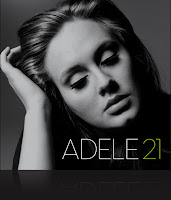Sloboda conducted an experiment where he asked listeners to identify passages in a song that register a strong emotion like tears or goose bumps. The listeners found 20 such passages which Sloboda then analyzed and found that 18 contained a writing device known as "appoggiatura."
An appoggiatura can be a passing note that clashes with the melody just enough to create a temporary dissonance, an entrance of a new voice, or song dynamics, all of which creates tension for the listener. As I mention on this blog and in all of my books, all art is based around tension and release. In art, it's black against white. In photography, its light against the shadows. In music, it's dissonance against harmony or quiet to loud. Tension and release makes things interesting. You can't have any kind of art without it.
When several appoggiaturas happen close to one another in a melody, it develops a constant state of tension and release, which makes the melody of a song more powerful and provokes an even stronger reaction from the listener.
One of the reasons why psychologists think that Adele was so successful with her album 21, was because of the strong use of appoggiaturas in songs like "Rolling In The Deep" and "Someone Like You." In "Someone Like You," the song starts with a soft repetitive pattern, then jumps an octave to a loud chorus (listen to the examples below, which came from a Wall Street Journal article on the subject).
It turns out that there actually is a formula for appoggiatura that's comprised of 4 elements:
- Passages that go from quiet to loud
- An entrance of a new instrument or harmony
- A melody that suddenly expands its range
- Unexpected deviations of melody or harmony.
All of these are great arrangement devices which we talk about here often, especially in song analysis, so none are new to us. The fact that there have actually been studies that verify what we've already known for ages is, however. One fact remains - surprises in volume level, melody, and harmony are what makes a listener's spine tingle. Remember to use them.
----------------------------------
You should follow me on Twitter for daily news and updates on production and the music business.
Don't forget to check out my Music 3.0 blog for tips and tricks on navigating social media and the new music business.



5 comments:
Thanks, great story! I'd be interested to know what the other 18 songs were that were identified in the study. Thanks again for the great blog!
I think we are missing out on the actual lyrics, at least for me there are certain wordings that can make or break a song, not only how it's sung or played.
Jimmy,
I agree that lyrics are very important. I think the point of this post is that there are other things, not involving lyrics, that a songwriter can do to produce that "spine tingle" that we all love in a good song!
Hey Bobby,
I just have to throw out for the record that an appogiatura (or "leaning tone") is an (most often) accented non-harmonic tone that is reached by leap and resolves by step. The term appogiatura really doesn't describe changes in volume or instrument changes, etc.. A non-harmonic tone BTW is a tone which doesn't fit the harmony.
In the melody you linked (the adele clip) some of the 'money notes' (as I'd describe them) are passing tones, escape tones, and appogiaturas, all of which are a kind of non-harmonic tone. The difference in terminology refers to how they are approached and how lead on...
In the melody cited, the same tone might be either harmonic, or non harmonic depending on the harmony below it, for example the C# is an escape tone in the E chord, but a chord tone in the A chord.
You could also think of it as the 6th however...
I LOVE this stuff!
-Reed
Your right, Reed, on a strictly technical level. I think the point was that emotions can be provoked in many ways and they're all lumped together in a general sense.
In fact, I was told the other day that Clive Davis always insisted in a modulation in a single for the same reason.
Post a Comment